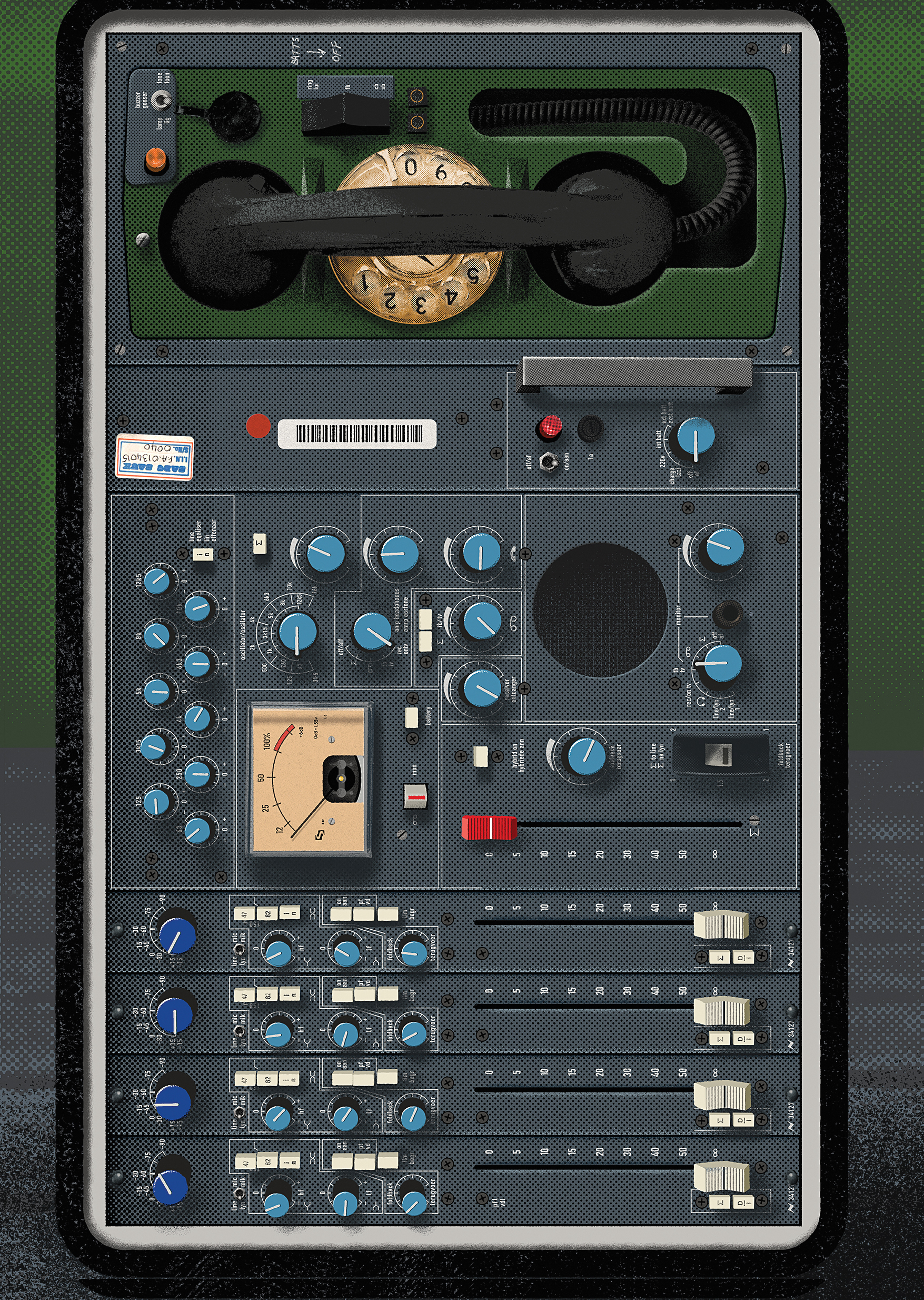Maybe it was my childhood fascination with The Ventures, but I've always been a fan of spring reverb devices in the studio. I have four rack-mount spring units (Demeter [Tape Op #21, #109], Benson [#126], Surfy Industries [#153]), and one Surfy Industries Surfybear stompbox. I love them all, and each has its own tone. The Surfybear is much adored at Jackpot! but it's 17.5 inches wide – likely in order to house a big spring pan such as those found in old Fender amps – but I have seen several much smaller, true spring reverb pedals lately. At 6.29 inches wide, the Echo Fix EF-P2 Spring Reverb pedal is one of these units, and given Echo Fix's reputation with real analog tape delays [EF-X2 in #142], I assumed (correctly) that it would sound bigger than it looks. The three-spring reverb tank is visible through a clear window, and when the springs are pushed harder, a cool blue glow in the background increases. Nice! The actual VU meter is incredibly helpful, as it shows how hard the signal is being pushed into the reverb tank via the Spring Drive knob. Pushing the levels hotter eventually distorts the spring sound; useful if you want a nasty, mucked up howl of reverb as opposed to polite surf reverb. Bass and Treble controls are neutral at 12 o'clock, and either cut or boost from there. With many devices like this, I've found the tone controls too understated, but with the EF-P2 I was absolutely hearing the changes. Reducing lows and boosting highs resulted in bright, soft reverbs on electric guitar that added depth and dimension without swallowing the notes. Swinging the EQs in the other direction, I could get a deep wash of bassy reverb that supported baritone guitar recordings in a pleasant way. While doing overdubs with longtime Jackpot! session player, Paul Brainard, on pedal steel, I dropped the EF-P2 in before the amp, soloed the spring, set the Drive and tone knobs to my liking, and then brought the Direct signal back in. I also powered the EF-P2 with a rechargeable 9v battery pack to avoid any extra ground loops or hum. We got an incredibly clean spring sound that fit the parts perfectly. I even loaned the pedal to Paul to see if he wanted to buy one for studio and live use. The EF-P2 would be a perfect fit for any guitar amp without a reverb tank.
I had initially hooked the EF-P2 up to a Radial EXTC re-amp/DI unit [Tape Op #100] and have used it on some console mixes as well, patching via the rear mono, unbalanced 1/4-inch I/O. I loved the sound through my console, but setting it up was pretty non-intuitive in my book. There are two footswitches on the unit, Direct On/Off and Bypass, and they both have red LEDs above. I had no idea what Direct meant, and assumed it meant to turn the pedal on and off. Direct actually means that there is dry source audio in the output path or not, and the LED off means there is no direct. The Bypass switch turns the spring output off or on, and LED “on” means you can hear the spring. If the Spring Volume pot is turned all the way to the left, you will hear nothing from the pedal when Bypass is on and Direct is off. The ability to remove the dry (Direct) signal from any stompbox is a boon, and more pedals allow that these days which makes using them in a studio mix possible, so I do appreciate the Direct switch. However, I cannot imagine typical guitar players getting to a point in a song, hitting this button, and pumping out spring-only audio – it seems odd for a "stomp" feature.
Despite all that, I love the EF-P2 pedal, and I sorted out how to use it quickly enough. If I didn't have so many rack-mount springs already I might be tempted to buy two of these for stereo reverb mixing, and together would still cost less than some of the stereo units I own. Performers should absolutely check this pedal out; you'll love it too!




_disp_horizontal_bw.jpg)